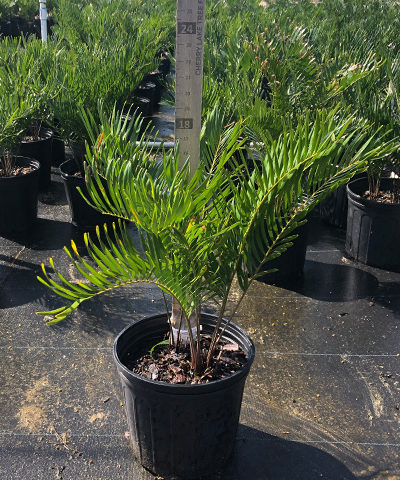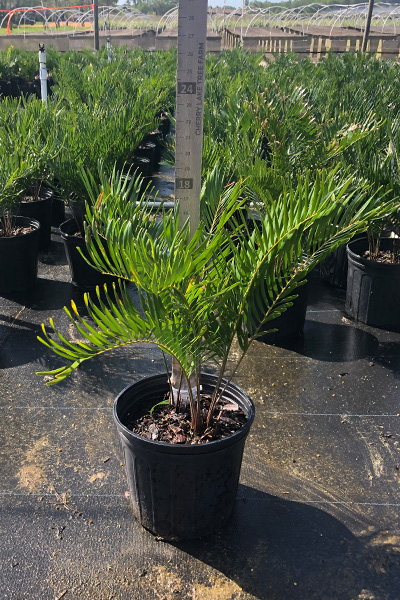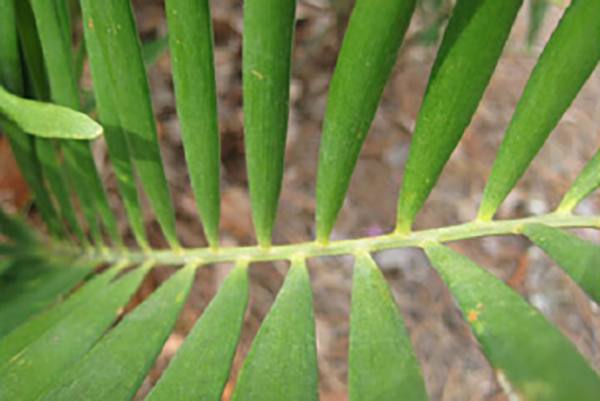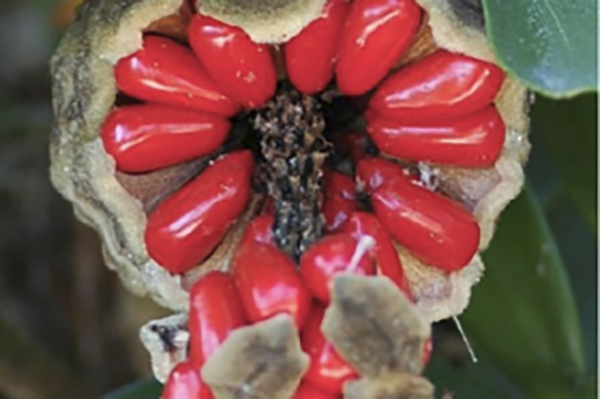Coontie Palm

Zamia pumila ‘Coontie’
Despite its name, the Coontie Palm is not a palm, but rather a cycad with palm and fern-like characteristics. This hardy Florida native reaches a mature height of four feet and is often seen in the landscapes as an accent plant, a foundation planting or a mass planting for groundcover. It is a slow grower and drought resistant, making it a low-maintenance option for landscapes. Its deep green foliage and bright red seeds can provide a tropical landscape feel and a rich evergreen backdrop for woodland and shady areas.
In late winter, the plant produces a rusty brown, cone shaped fruit. This fruit is visibly different between male and female plants. Male cones are thinner and shorter then female cones, and produce pollen. Female cones are upright, brown, 6 inches tall and covered in a velvety fuzz. Upon maturity, the female cones will open to reveal the lobed seeds.
The coontie palm is the host plant to the Atala Butterfly, a Florida-native which was once thought to be extinct. Indeed, the atalae larvae accumulate the natural toxic ‘cycasin’ which is found in the Coontie Palm, and use it to repel birds and other various predators. This same chemical that is beneficial to the atala, can be toxic to other animals including horses, cats, dogs and humans.

Ornamental Characteristics:
Native Origin:
Florida
Common Names:
Coontie; Arrowroot; Seminole Bread; Zamia floridana
Description:
Hardy Range: 8B-11
Mature Height: 2 – 4’
Mature Spread: 3 – 5’
Growth Rate: slow
Growth Habit: round
Ornamental Characteristics:
This low-growing Florida native has glossy green foliage and an appealing shape. The evergreen leaves are fine in texture, and can resemble a fern due to their “pinnate,” or feather-like structure. These radiate from a large underground stem known as a caudex. These plants develop seed cones filled with red or orange seeds, but will not flower.
Environment:
Soil: alkaline; sand; acidic; loam
Salt: moderate to high
Exposure: partial shade, partial sun



